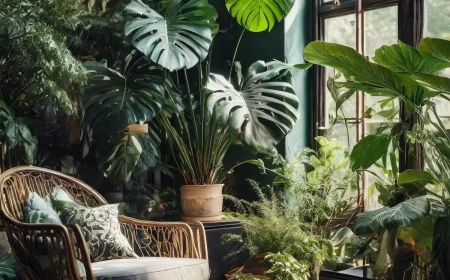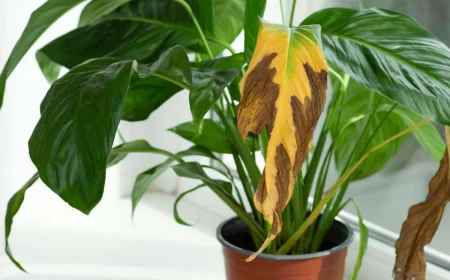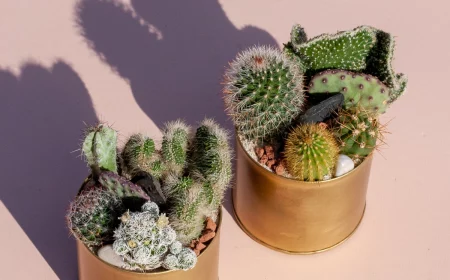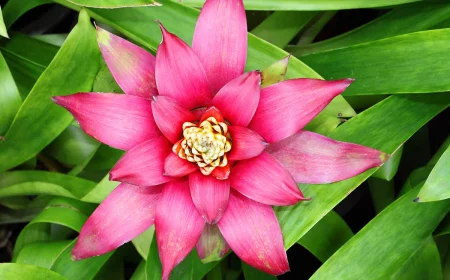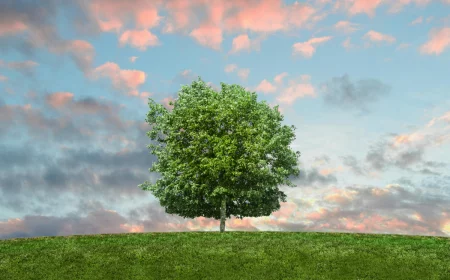The Real Secret to a Stress-Free Garden (It’s Not What You Think)
I’ve been designing gardens for a long time, and almost everyone who comes to me says the same thing. They want a beautiful space. But when we dig a little deeper, the real truth comes out. They don’t just want something pretty; they want a place that genuinely calms their mind and settles their spirit. A spot where they can step outside and feel the day’s stress literally melt away.
In this article
- Need a Dose of Calm This Weekend? A Quick Win.
- Why Some Gardens Feel Like a Hug (And Others Feel Like a Headache)
- Okay, Let’s Get Our Hands Dirty: Building Your Garden’s Foundation
- Choosing Plants That Actually Do Something
- Good Design Works Anywhere: From a Desert Lot to a City Balcony
- A Quick, Serious Word on Safety
A truly peaceful garden is so much more than a few nice flowers and a bench. It’s a careful blend of art, psychology, and an understanding of how our senses work. Too often, people toss in a few nice elements but miss the foundation, and the yard still ends up feeling a bit chaotic or exposed. I want to walk you through the core principles the pros use—the things that turn a basic backyard into a true sanctuary.
Need a Dose of Calm This Weekend? A Quick Win.
Before we dive deep, I get it. Sometimes you just need a fast, tangible result. If you’re feeling overwhelmed, here’s a simple project you can do this weekend for under $100.

Go to your local garden center and buy one large, beautiful pot—something at least 18-20 inches wide. Then, pick up a bag of potting soil and three plants: one ‘spiller’ (like Japanese Forest Grass or Creeping Jenny), one ‘filler’ (like a Hosta or some soft Lamb’s Ear), and one ‘thriller’ (like a calming ornamental grass). Plant them together, give it a good water, and place it right where you can see it from your favorite window or chair. Instantly, you’ve created a mini-oasis. It’s a small victory that can inspire the bigger changes to come.
Why Some Gardens Feel Like a Hug (And Others Feel Like a Headache)
Ever wonder why some places just feel right? It’s not magic; it’s sensory design. To create tranquility, we first have to manage what you see and hear.
Taming the Noise
Let’s be real: a neighbor’s lawnmower or the drone of traffic can kill a peaceful vibe in seconds. The goal isn’t total silence—that’s nearly impossible. The goal is to control the soundscape.
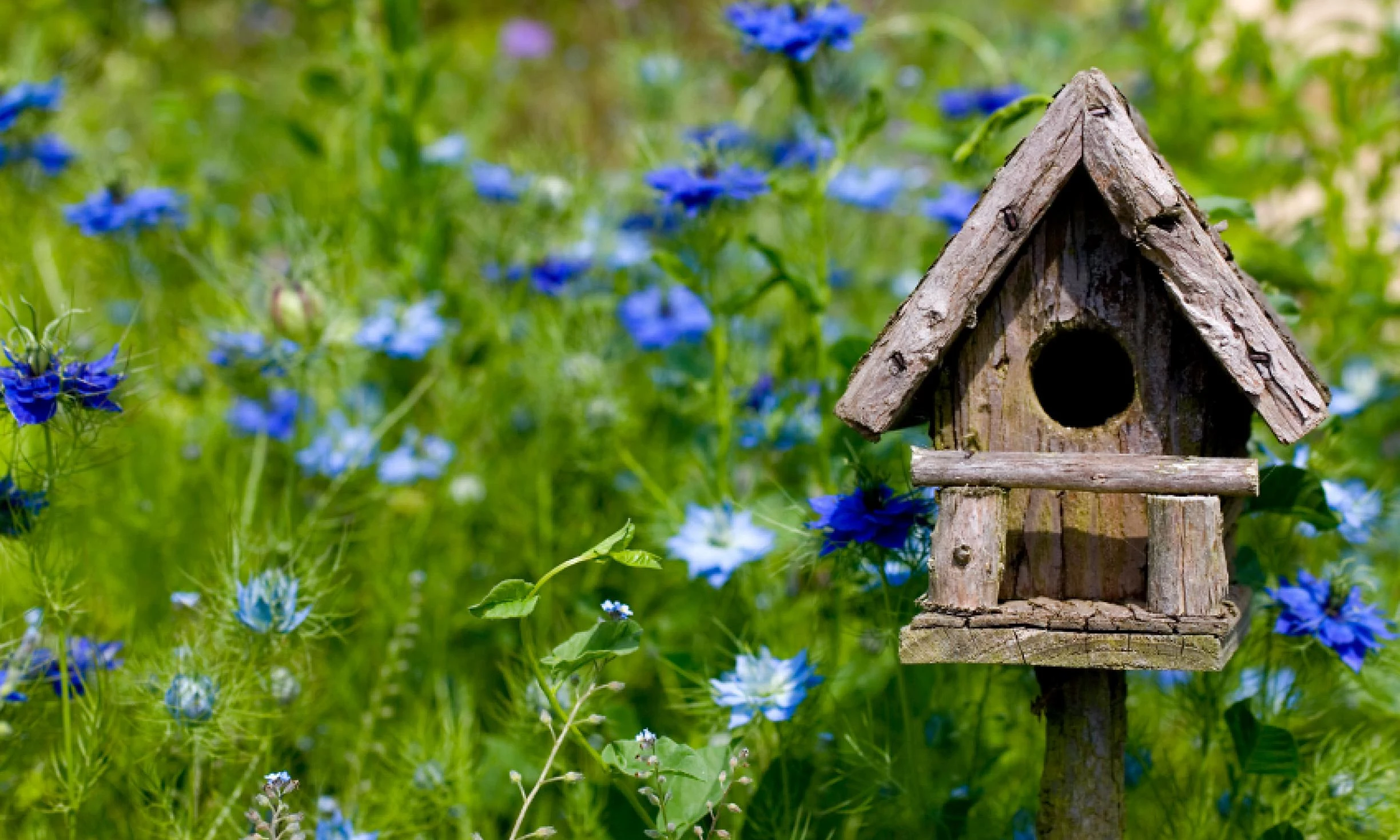
Sound is measured in decibels (dB). A quiet library is around 40 dB, while busy traffic can easily hit 70-85 dB. Believe it or not, a dense hedge can work wonders. A well-placed barrier of thick evergreens, like Arborvitae or Yew, can reduce noise by 5 to 10 decibels. That’s enough to turn a jarring roar into a background hum because the leaves and branches absorb and deflect the sound waves.
Quick tip: For a dense screen with something like Arborvitae, plant them about 3 to 4 feet apart. But be patient! You can expect to wait 3-5 years for that new hedge to really fill in and start blocking significant noise. It’s a long-term investment in peace and quiet.
We also use a trick called sound masking—adding pleasant sounds to cover up the bad ones. This is where a simple water feature is your best friend. The sound of moving water has a broad range of frequencies that are incredibly effective at masking traffic noise. Its gentle, consistent burble gives your brain something predictable and soothing to focus on.
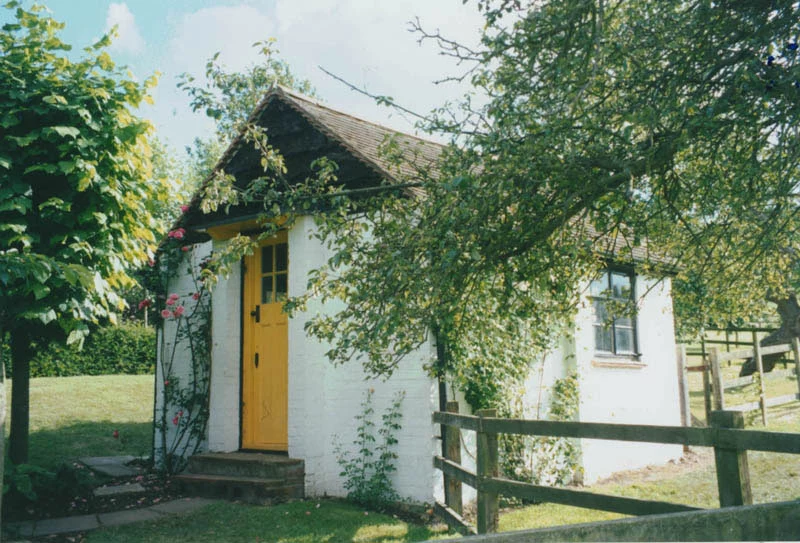
Giving Your Eyes a Place to Rest
A cluttered view creates a cluttered mind. If your eye is jumping all over the place, the space will feel busy and stressful. The solution is to create a gentle journey for the eye using structure and what we call ‘garden rooms.’
You can do this with a gently curving path, a low stone wall, or smart plant placement. A winding path, for example, does more than get you from A to B. It slows you down. It creates a little mystery by hiding what’s around the bend, which makes even a small space feel larger and more engaging.
Color plays a huge part here, too. Cool colors—think blues, purples, and deep greens—tend to recede, making a space feel bigger and more serene. Hot colors like bright reds and oranges are stimulating and demand your attention. For a restful garden, I always start with a rich foundation of green in different textures. Then, I’ll layer in soft, cool colors. A pop of something bright is great, but it should be a deliberate focal point, not part of a chaotic jumble.

Okay, Let’s Get Our Hands Dirty: Building Your Garden’s Foundation
Many folks start with the flowers. The pros? We start with the ‘bones’—the permanent structures and plants that give the garden its shape all year round, even in the dead of winter.
Your First Step: The 15-Minute Sanity Check
Before you buy a single plant, do this. Seriously. Grab a notebook and a drink, and go sit in your yard. Spend 15 minutes just observing and jotting down answers to these three questions:
- What’s the best thing I see from here? (A beautiful tree, a nice view?)
- What’s the most annoying sound I hear? (Traffic, the neighbor’s AC unit?)
- Where is the sun at 4 PM? (This tells you where the hot, intense sun is.)
This simple exercise gives you a hand-drawn map of your challenges and opportunities. It doesn’t need to be a work of art. Just sketch the basic shape of your yard and use symbols—a squiggly line for the annoying sound, a star for the ugly shed you want to hide, an arrow showing the afternoon sun. This little map is your blueprint for everything that follows.
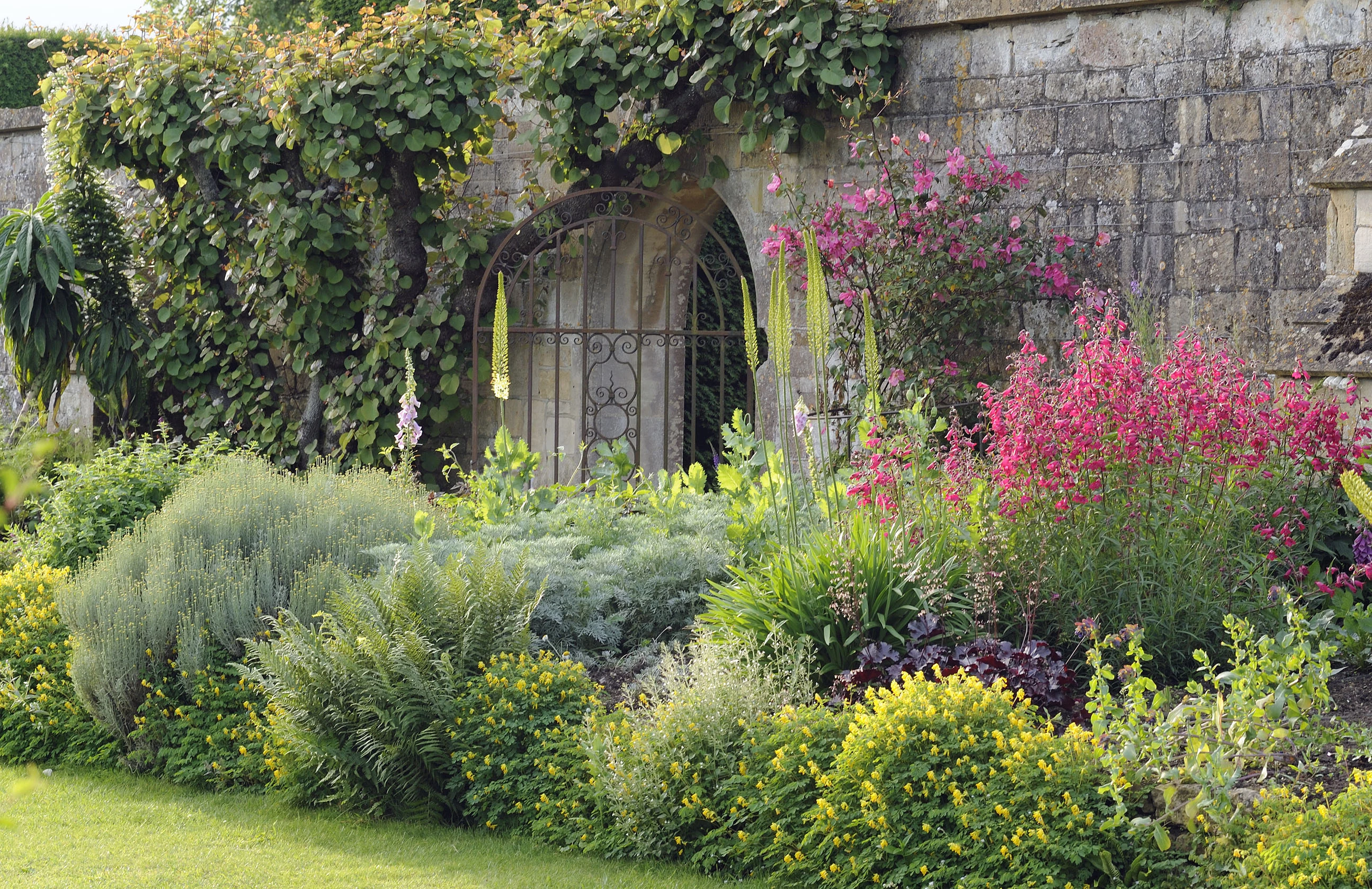
Building the Bones: Paths and Privacy
The ‘bones’ are your hardscape (paths, patios) and main structural plants (trees, big shrubs). They define the space.
Let’s Talk Paths: The material you choose completely changes the vibe. A straight concrete path says ‘utility,’ while a winding path says ‘slow down.’ Think about what works for you:
- Gravel or Pea Stone: This is your most budget-friendly option, often running just $2-$4 per square foot if you DIY it. It offers a wonderful, crunchy sound underfoot, which is a great sensory detail. The downside? It can get kicked into lawns, and you’ll need to rake it back and weed it occasionally.
- Stepping Stones: These create a more deliberate, rhythmic journey. You can set them in gravel, mulch, or even grass. The cost varies wildly based on the stone, from affordable concrete pavers to pricier natural flagstone. Expect a simple path to be a solid weekend project.
- Mulch or Wood Chips: A very natural and soft option, perfect for woodland or informal gardens. It’s cheap and easy to install, but it does break down over time and will need to be topped up every year or two.
Going Vertical for Privacy: A flat, open yard can feel very exposed. Creating vertical layers gives you a sense of cozy enclosure. This doesn’t have to be a big fence. A trellis with a climbing vine, a row of elegant columnar trees, or a tiered planting of shrubs can create a soft, green wall that makes you feel comfortably sheltered, not trapped.
Choosing Plants That Actually Do Something
Once the structure is there, we fill it in with plants. In a calm garden, every plant should have a job, whether it’s adding movement, texture, or scent.
Here’s the thing, walking into a garden center can be paralyzing. To make it easy, here are a few of my go-to, nearly foolproof plants for a serene vibe:
- My Go-To ‘Calm’ Plants for SUN: Lavender (for scent and color), ‘Karl Foerster’ Feather Reed Grass (for beautiful, upright movement), and Catmint (tough as nails with soft, hazy purple flowers).
- My Go-To ‘Calm’ Plants for SHADE: You can’t go wrong with Hostas (for bold, textured leaves), Japanese Forest Grass (for spilling, graceful movement), and Heuchera (for a pop of deep, moody color).
Think beyond just color. Place fuzzy Lamb’s Ear or feathery grasses where you can touch them along a path. And be strategic with scent—you don’t want a war of competing perfumes. Place fragrant plants like Lilac or sweet Daphne near a bench or entryway where the scent can be appreciated up close.
Good Design Works Anywhere: From a Desert Lot to a City Balcony
The core principles are universal, but the execution has to fit your reality. Working with your local environment, not against it, is the key to genuine tranquility.
In hot, dry climates, calm comes from minimalism and resilience. You work with gravel, stone, and sculptural plants like Agave and Yucca that don’t need a ton of water. Shade is the ultimate luxury, so a single, beautifully placed tree that creates a cool spot for a bench becomes the garden’s centerpiece.
In wetter, temperate climates, you can embrace lushness. Calm comes from layering shades of green. Think of a canopy of trees, a mid-layer of shrubs like hydrangeas, and a ground layer of ferns and moss. The main challenge here is keeping things from getting overgrown and chaotic, so regular pruning is key to maintaining that restful feeling.
For small urban spaces like a balcony or tiny patio, it’s all about going vertical. Use wall planters and tall, narrow containers to create a living green wall. A small, self-contained fountain (you can find plug-in models for $150-$300) can work wonders to mask street noise. A heads up for balcony gardeners: Always, always check the weight-bearing capacity of your balcony before hauling up large pots, heavy soil, and water. If you have any doubt, it’s worth a consultation with a structural engineer.
A Quick, Serious Word on Safety
A garden should be your safe haven, and that starts with being smart and responsible.
Water Safety is Non-Negotiable: This is my most serious warning. If you have small children or grandchildren, any open water—even a shallow pond—is a potential drowning hazard. It must be secured. This could mean a proper fence with a self-latching gate or a sturdy metal grid installed just below the water’s surface. Check your local building codes; many places require any water feature deeper than 18 inches to have the same protections as a swimming pool. Don’t ever mess around with this.
Permits and Professionals: Before you build any major structure like a deck, a tall fence, or a retaining wall, check with your local town or city hall. You will almost certainly need a permit. Doing work without one can result in fines and being forced to tear it all down. Oh, and for anything involving electrical or plumbing for lights or pumps? Hire a licensed pro. It’s not worth the risk of fire or flood.
Honestly, knowing your limits is a sign of wisdom. I design gardens for a living, but I still hire a certified arborist for big tree work. If you’re unsure where to find qualified help, a quick online search for organizations like the ‘International Society of Arboriculture’ or the ‘Association of Professional Landscape Designers’ can point you to certified experts in your area.
Building a garden that truly feeds your soul is a journey. It starts with a little observation and a solid plan. It’s a conversation between you and your patch of land. And when you get it right, the reward is a space that gives back to you, day after day.

